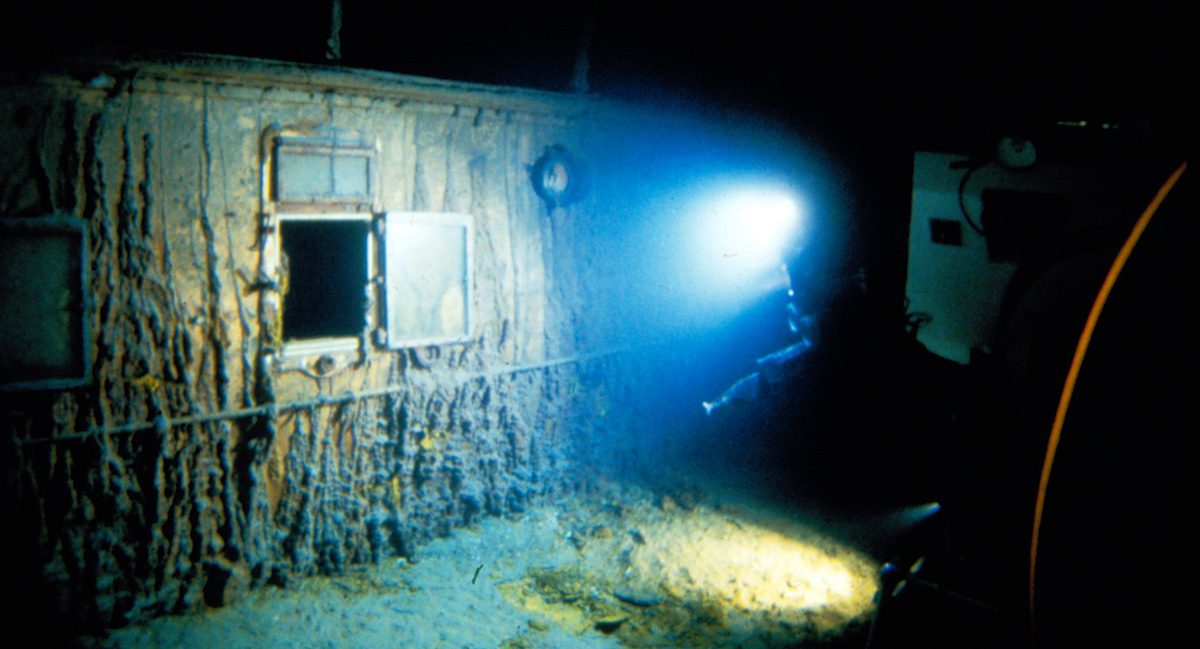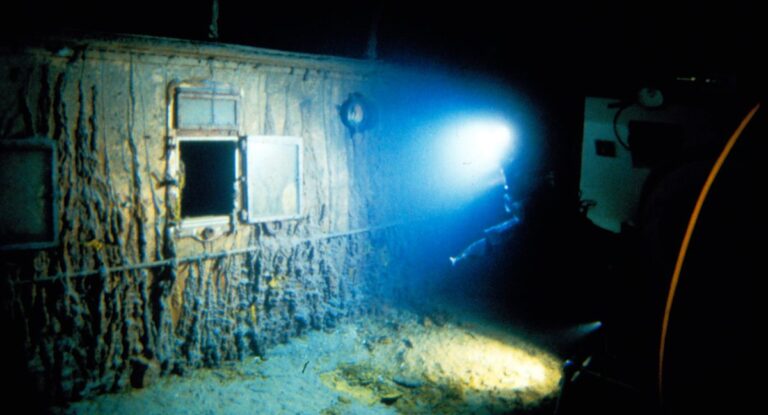Woods Hole Oceanographic Institution releases rare video footage from the first submersible dives to RMS Titanic
In the submersible Alvin, the mission was the first time humans set eyes on the wreck since it sank nearly 75 years earlier.
Release of footage coincides with the 25th anniversary and re-release of the blockbuster film “Titanic”.

Woods Hole, Mass. It has been almost 38 years since the remains of the RMS Titanic were first discovered lying on the ocean floor. On September 1, 1985, a team from Woods Hole Oceanographic Institution (WHOI) led by Dr. Robert Ballard in partnership with Institut français de recherche pour l’exploitation de la mer (IFEMER) discovered the final resting place of the ship. In July 1986, nine months after the discovery, a team from WHOI returned to the wreck site, this time using three-person research submersible Alvin and the newly developed remotely operated vehicle Jason Jr. The trip marked the first time that humans laid eyes on the vessel since its ill-fated voyage in 1912.
On February 10, 2023, a remastered version of the multi-Academy Award®-winning movie “Titanic” was released in celebration of film’s 25th anniversary. Timed to coincide with this occasion, WHOI is debuting 80 minutes of rare video footage from the 1986 expedition to explore the famous wreck. The newly released video highlights the remarkable achievement by the team to bring iconic images of the ship back to the surface.
“More than a century after the loss of Titanic, the human stories embodied in the great ship continue to resonate,” said explorer, filmmaker, and ocean advocate James Cameron. “Like many, I was transfixed when Alvin and Jason Jr. ventured down to and inside the wreck. By releasing this footage, WHOI is helping tell an important part of a story that spans generations and circles the globe.”
Efforts to locate and salvage the Titanic began almost immediately after it sank, but technical limitations as well as the vast expanse of the search area in the North Atlantic made it impossible to locate the wreck. By 1985, WHOI had developed new imaging technology, including Argo, a camera sled that was towed from the research vessel Knorr and captured the first photographs the ship beneath more than 12,400 feet of water. The WHOI-led 1986 expedition returned to explore the wreck with the human-occupied submersible Alvin, and a remotely operated vehicle that was able to penetrate the wreck and return with iconic images of the ship’s interior. WHOI’s Dr. Robert Ballard led both the 1985 discovery and 1986 return to the wreck site and was one of the passengers aboard Alvin when it dove on the wreckage.
For WHOI and for the entire ocean research community, Titanic’s discovery proved the capabilities of new underwater imaging and navigation systems and helped spur significant advantages in the development of deep-sea exploration technology.
Press release from the Woods Hole Oceanographic Institution



